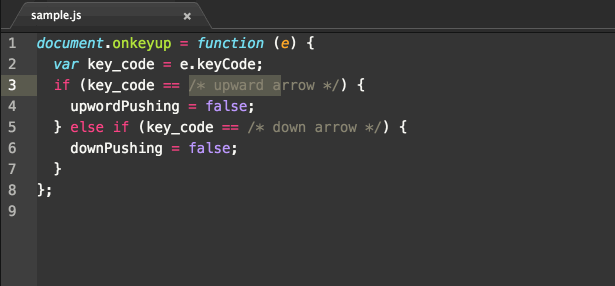
Here is an example of listening to a keydown event on an element whose id is, 'type-here': let elem = document.getElementById('type-here') Įlem. You can add each of these event types to an HTML element or document object using the addEventListener method. We can get contextual information about these events from the KeyboardEvent interface's properties and methods. You are going to type the string s character by character, from the first character to the last one. There are primarily three keyboard event types, keydown, keypress and, keyup. The KeyUp event occurs after any event for a control caused by pressing or sending the key. Backspace time limit per test 2 seconds memory limit per test 256 megabytes input standard input output standard output You are given two strings s and t, both consisting of lowercase English letters. key: the character ('A', 'a') for non-character keys. March 15, 2022Angular (keyup.backspace) cannot capture 'shift + backspace' Issue I am trying to capture every delete and backspace happening in an form input field, and I have doing it the following way:
Keyup backspace code#
The primary keyboard event properties are the following: code: it is the key code ( for example, 'KeyA' ), specific to the key location on the keyboard. The first one triggers on pressing the key down, the second one- on releasing the key. It extends the UIEvent interface which eventually extends the Event interface. The keyboard events are keydown and keyup. It will handle all input related events including deleting using backspace or delete key and also pasting a value in to the input itself. The KeyboardEvent interface provides information using the defined constants, properties, and a single method (as of January 2021). I saw this happening when i use (keypress), (keyup) or (keydown) event emitters on the input element. The KeyboardEvent interface and the event types

The keyboard event types we may not ever need.The keyboard event types we need to focus on.At the same time, W3.org keeps updating the specification by introducing new properties, deprecating existing ones, and marking certain code as legacy.īecause of this, it is essential for web developers to keep learning about the KeyboardEvent interface to know what exactly they should use and what's no longer relevant.
Keyup backspace how to#
There have been many articles written about how they work and how to use them. Like many other JavaScript events, the KeyboardEvent interface provides all the required properties and methods for handling every keystroke a user makes using the keyboard. If a keystroke causes the focus to move from one control to another control, the KeyDown event occurs for the first control, while the KeyPress and KeyUp events occur for the second control.JavaScript keyboard events help you capture user interactions with the keyboard. The KeyUp event occurs after any event for a control caused by pressing or sending the key. The KeyDown and KeyPress events occur when you press or send an ANSI key. The user presses Esc on a form with a command button whose Cancel property is set to True. When binding to either the keyup or keydown events in your Angular 2+ templates, you can specify key names. The user presses Enter on a form with a command button whose Default property is set to True. The KeyDown and KeyUp events don't occur under the following circumstances: The numeric keypad and keyboard number keys. The keypress event is (in its original IE form, and in Safari/Chrome) about an actual character being added to a text field. Navigation keys, such as HOME, END, PAGEUP, PAGEDOWN, UP ARROW, DOWN ARROW, RIGHT ARROW, LEFT ARROW, and TAB.Ĭombinations of keys and standard keyboard modifiers (SHIFT, CTRL, or ALT). The KeyDown and KeyUp events are typically used to recognize or distinguish between:Įxtended character keys, such as function keys. These events also occur if you send a keystroke to a form or control by using either the SendKeys action in a macro or the SendKeys statement in Visual Basic. A form can have the focus only if it has no controls or all its visible controls are disabled. The form or control with the focus receives all keystrokes. The KeyDown and KeyPress events alternate repeatedly until the user releases the key, at which time the KeyUp event occurs.

The KeyDown event occurs when the user presses a key on a running form while that form or a control on it has the focus. An integer that represents the key code of the key that was pressed or released. The KeyDown and KeyUp event syntaxes have these parts: Part Private Sub object _ KeyDown( ByVal Ke圜ode As MSForms.ReturnInteger, ByVal Shift As fmShiftState) Private Sub object _ KeyUp( ByVal Ke圜ode As MSForms.ReturnInteger, ByVal Shift As fmShiftState) KeyUp occurs when the user releases a key. KeyDown occurs when the user presses a key. Occur in sequence when a user presses and releases a key.


 0 kommentar(er)
0 kommentar(er)
